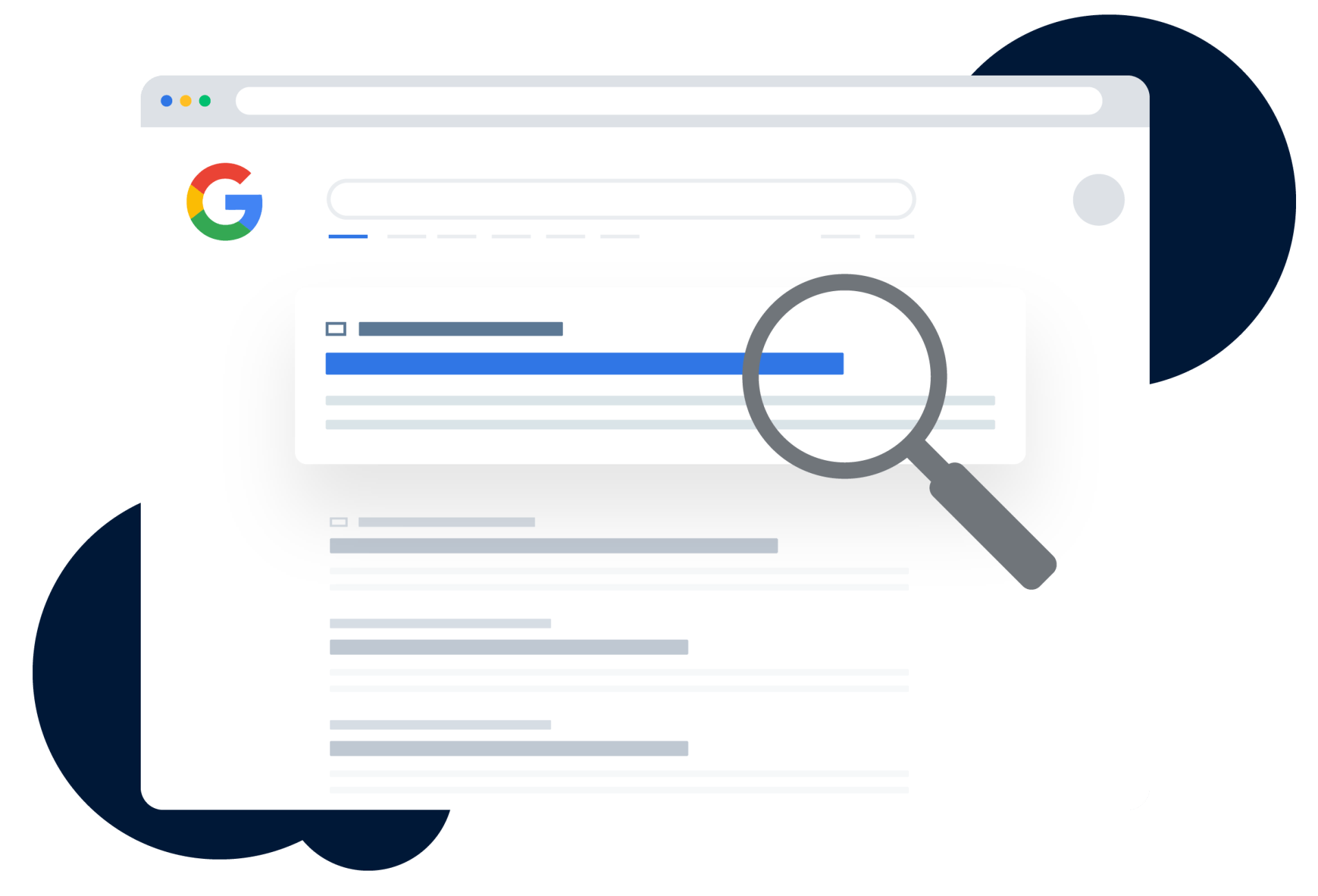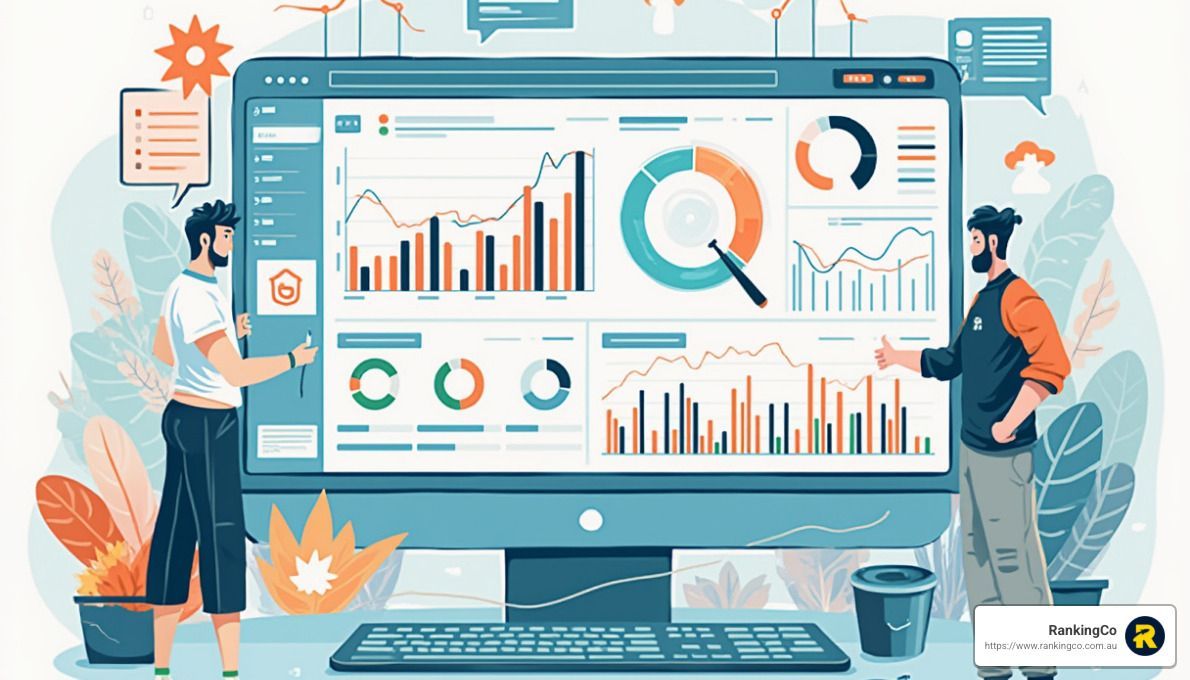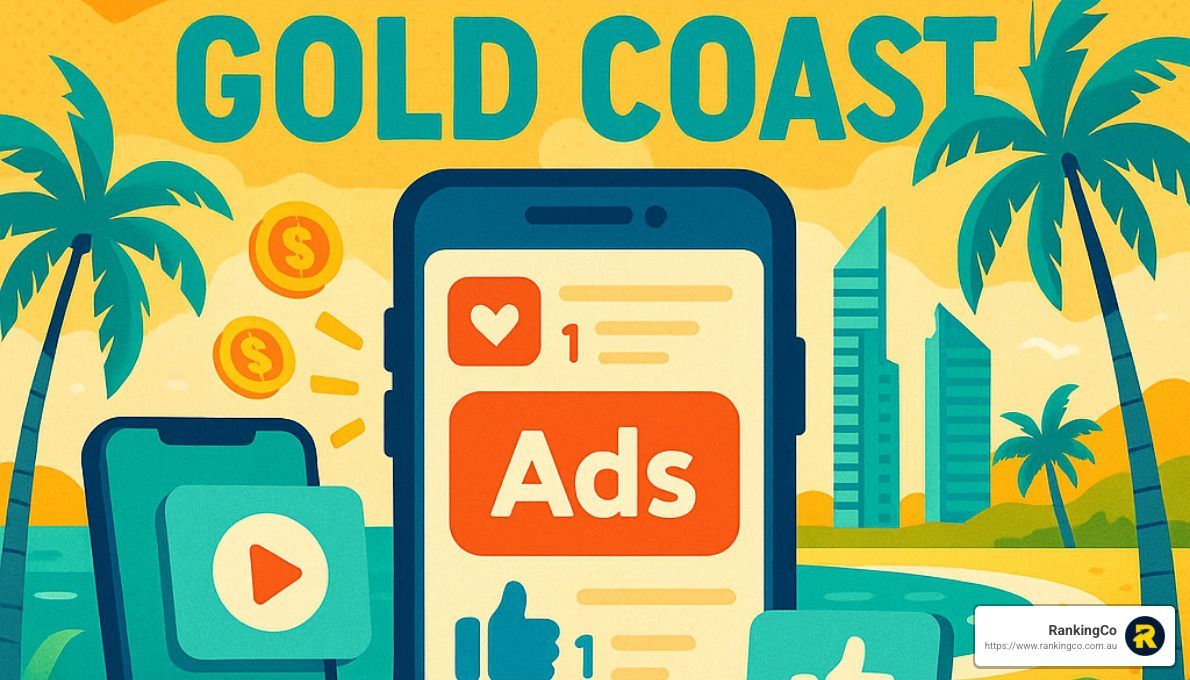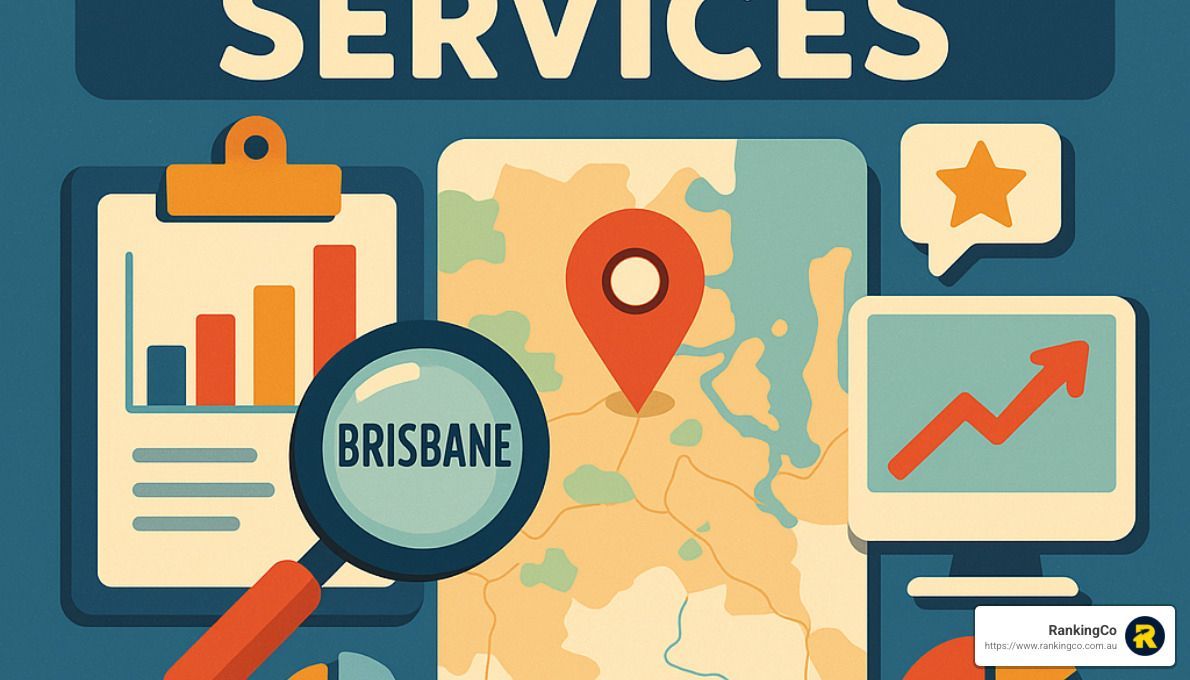How Content Marketing and SEO Work Hand in Hand
The Perfect Pair: Content Marketing and SEO
In today's digital landscape, content marketing seo is essential for any business aiming to boost its online presence. At its core, this strategy combines two powerful marketing techniques to help your business grow:
- SEO (Search Engine Optimisation): Improves the visibility of your website through non-paid methods.
- Content Marketing: Attracts and engages your audience with valuable and relevant content.
Together, they create a digital strategy that's both powerful and effective. SEO ensures that search engines find your content, while content marketing captivates your audience. This partnership is vital to boost your search engine rankings and increase customer engagement. Combining these strategies shines a spotlight on your business, bringing meaningful traffic and potential customers your way.
I’m Kerry Anderson, and for over 15 years, I’ve been helping businesses grow, adapt, and thrive online. I know what it takes to cut through the noise with a strategy that’s smart, genuine, and impactful.
My passion? Helping brands not only find their voice but reach the right people, making sure their message truly lands.
Understanding Content Marketing
Content marketing is all about creating and sharing valuable content to attract and engage your target audience. This isn't about direct selling. It's about building trust and authority in your niche by providing content that your audience finds helpful and interesting.
Content Creation
At the heart of content marketing is content creation. This involves producing various types of content, such as blog posts, videos, infographics, and social media updates, custom to your audience's preferences and needs.
Think of content creation as storytelling. Your content should tell stories that resonate with your audience, addressing their pain points and offering solutions. Well-crafted content not only attracts attention but also encourages sharing, which amplifies your reach.
Audience Engagement
Engaging your audience is crucial. Engaged audiences are more likely to become loyal customers. To achieve this, your content must be relevant and relatable.
Consider this: A company that sells eco-friendly products might share tips on sustainable living. This not only engages eco-conscious consumers but also positions the brand as a thought leader in sustainability.
Educational Content
Educational content is a powerful tool in content marketing. By educating your audience, you empower them to make informed decisions. This builds trust and positions your brand as an authority.
For example, a tech company might create tutorials and guides on using their products effectively. This not only helps users but also showcases the company's expertise.
Brand Authority
Establishing brand authority is a key goal of content marketing. When your audience sees you as a credible source of information, they're more likely to trust your products or services.
Imagine a financial advisor who regularly publishes insightful articles on personal finance. This establishes them as an expert, making potential clients more inclined to seek their services.
Content marketing is a strategic approach focused on creating and sharing valuable content to attract and engage a target audience. By crafting engaging, educational content, you can build brand authority and foster lasting relationships with your audience.
Next, we'll dig into what makes SEO an indispensable part of this strategy.
What is SEO?
Search Engine Optimisation (SEO) is a strategy aimed at boosting your website's visibility on search engines like Google. When done right, SEO can significantly increase organic traffic, which is the unpaid traffic that comes from search engine results.
Website Visibility
The main goal of SEO is to make your website more visible. The higher your website ranks on search engine results pages (SERPs), the more likely people are to click on it. For instance, if someone searches for "best hiking boots" and your site appears at the top, they're more likely to visit your site than if it were buried on page two.
Organic Traffic
Organic traffic is essential for any website. It's like having a store on a busy street where people naturally pass by, rather than in a secluded alley. SEO helps bring this natural flow of visitors to your site, which can lead to more sales, more leads, or more engagement.
Keyword Optimisation
A big part of SEO is keyword optimisation. This involves researching and using the right keywords that your target audience is searching for. Imagine running a bakery and knowing that people often search for "gluten-free cakes." By including this keyword in your content, you increase the chances of attracting those searchers to your site.
Here's a quick example: A business selling gardening tools might focus on keywords like "best gardening tools for beginners" to attract novice gardeners.
How It All Works Together
SEO isn't just about keywords. It's a mix of several elements that improve your site's performance. This includes on-page elements like content quality and meta tags, off-page factors like backlinks, and technical aspects like site speed and mobile-friendliness.
To sum it up, SEO is like a puzzle where all pieces need to fit together to create a complete picture. Each piece, whether it's keyword optimisation or improving site speed, plays a crucial role in enhancing your website's visibility and driving organic traffic.
Now that we've covered the basics of SEO, let's explore how content marketing can lift your SEO efforts.
How Content Marketing Improves SEO
Content marketing and SEO are a dynamic duo. When combined, they can dramatically improve your website's performance. Let's break down how content marketing improves SEO through backlinks, search intent, user experience, and brand awareness.
Backlinks
Backlinks are like votes of confidence from other websites. They tell search engines that your content is valuable and trustworthy. High-quality content naturally attracts these backlinks. For example, if you write a comprehensive guide on "sustainable gardening," other sites might link to it as a resource. This boosts your site's authority and can improve your search rankings.
Tip: Focus on creating insightful content that others want to reference. Think case studies, expert interviews, or detailed how-tos.
Search Intent
Understanding search intent is crucial for creating content that resonates with your audience. Search intent is the reason behind a user's query. It could be informational, navigational, commercial, or transactional. By aligning your content with the right intent, you ensure that your audience finds exactly what they're looking for, which keeps them engaged.
Example: If users are searching for "how to plant tomatoes," they likely want a step-by-step guide, not an ad for tomato seeds.
User Experience
User experience (UX) is a key factor in SEO. Great content should be easy to read and steer. This means clear headings, short paragraphs, and engaging visuals. A smooth UX keeps visitors on your site longer, reducing bounce rates and signaling to search engines that your site is valuable.
Quick Tip: Use bullet points, tables, and images to make your content more digestible.
Brand Awareness
Content marketing also boosts brand awareness. By consistently publishing valuable content, you establish your brand as an authority in your field. This not only attracts more visitors but also encourages them to return. When people recognise and trust your brand, they're more likely to click on your site in search results, improving your click-through rate (CTR).
Case Study: The Cleveland Clinic saw massive success by shifting to an audience-driven content strategy, which significantly boosted their online visibility and authority.
Content marketing and SEO work hand in hand to lift your website's performance. By focusing on creating valuable content that aligns with search intent, attracts backlinks, improves user experience, and boosts brand awareness, you can achieve better search engine rankings and more organic traffic.
Next, let's dive into strategies for effective content marketing SEO.
Strategies for Effective Content Marketing SEO
Combining content marketing and SEO requires a strategic approach. Here, we'll explore key strategies: keyword research, content optimisation, distribution channels, and analytics.
Keyword Research
Keyword research is the cornerstone of effective content marketing SEO. It helps you understand what your audience is searching for and how you can meet their needs.
Steps for Keyword Research:
- Identify Seed Keywords: Start with broad terms related to your business or industry.
- Use Tools: Tools like the Keyword Magic Tool can provide a list of relevant keywords, including search volume and intent.
- Focus on Long-Tail Keywords: These are more specific phrases that often have less competition and higher conversion rates. For example, instead of just "gardening," consider "organic vegetable gardening tips."
- Analyse Competitors: Look at what keywords your competitors rank for and identify gaps you can exploit.
Tip: Regularly update your keyword list to keep up with trends and changes in search behaviour.
Content Optimisation
Once you've identified the right keywords, the next step is to optimise your content.
Best Practices for Content Optimisation:
- Integrate Keywords Naturally: Ensure keywords fit seamlessly into your content without overstuffing.
- Create Engaging Titles and Meta Descriptions: These should include your primary keyword and entice users to click.
- Use Headers and Subheaders: Break up content for better readability and include keywords where appropriate.
- Optimise Images: Use alt tags with relevant keywords to improve accessibility and SEO.
Example: A blog post titled "5 Essential Tips for Organic Vegetable Gardening" with clear sections and engaging visuals is more likely to rank well and engage readers.
Distribution Channels
Creating great content is just the start. You need to distribute it effectively to reach your audience.
Key Distribution Channels:
- Social Media: Platforms like LinkedIn, Instagram, and X (formerly Twitter) are excellent for sharing content and engaging with your audience. Use hashtags to increase visibility.
- Email Newsletters: Segment your email list to send targeted content to specific groups.
- Organic Search: Ensure your content is optimised for search engines to attract organic traffic.
Case Study: The Cleveland Clinic used a combination of social media and email newsletters to boost their content reach, resulting in improved brand visibility.
Analytics
Monitoring and analysing your performance is crucial to refining your strategy.
Tools for Analytics:
- Google Search Console: Track metrics like clicks, impressions, and average CTR.
- Semrush: Use tools like the Position Tracking tool to monitor keyword rankings and the Backlink Audit tool to evaluate your backlink profile.
Actionable Insights:
- Identify Trends: Look for patterns in traffic and engagement to identify what works.
- Make Data-Driven Decisions: Use analytics to tweak your content strategy and improve performance.
Tip: Regularly review your analytics to stay ahead of changes in search algorithms and user behaviour.
By implementing these strategies, you can effectively combine content marketing and SEO to boost your website's visibility and drive organic traffic.
Next, let's address some frequently asked questions about content marketing SEO.
Frequently Asked Questions about Content Marketing SEO
What is SEO in content marketing?
SEO, or search engine optimisation, is a crucial part of content marketing. It involves tailoring your website and its content to be more visible to search engines like Google. By doing so, you increase the chances of your content appearing at the top of search results. This is vital for attracting organic traffic.
Website optimisation is a key element here. It means making sure that all parts of your website, from text to images, are set up to help search engines understand what your site is about. This includes using keywords strategically, ensuring fast page load times, and having a mobile-friendly design.
How to combine SEO and content marketing?
Combining SEO and content marketing involves a few strategic steps:
- Keyword Research: Start by identifying the terms your audience uses when searching for information related to your industry. Use tools like the Keyword Magic Tool to find relevant keywords that have a good balance of search volume and competition.
- Content Planning: Plan your content around these keywords. Create a content calendar to ensure a steady flow of posts that cater to different stages of the buyer's journey. This ensures that your content is both relevant and timely.
- Content Optimisation: Once your content is planned, make sure it is optimised for SEO. This includes integrating keywords naturally, using engaging headers, and ensuring that your meta descriptions are compelling.
- Backlinks: Build backlinks to your content to increase its authority. When other reputable sites link back to your content, it signals to search engines that your content is valuable. This can improve your rankings.
- Social Validation: Share your content on social media platforms to increase its reach. Social validation, such as likes and shares, can indirectly boost your SEO by driving more traffic to your site.
What is content marketing in off-page SEO?
Content marketing plays a significant role in off-page SEO, which refers to actions taken outside of your website to impact your rankings within search engine results pages. Here are some key components:
- Backlinks: As mentioned, acquiring backlinks from high-authority sites is essential. These links act as "votes of confidence" for your content, suggesting to search engines that it is trustworthy and relevant.
- Social Validation: Engaging with your audience on social media can improve your off-page SEO. When users share your content, it increases its visibility and can lead to more backlinks.
- Brand Awareness: Content marketing helps build your brand's reputation. When your content is consistently valuable and informative, it can lead to increased brand searches, which is a positive signal to search engines.
By understanding these components, you can effectively use content marketing to improve your off-page SEO efforts, leading to better visibility and more organic traffic.
Next, we'll conclude our discussion by exploring the latest trends and technologies in content marketing and SEO.
Your Path to Digital Success Begins Here
As we wrap up our exploration of how content marketing and SEO work hand in hand, it's clear that these strategies are essential for any business aiming to thrive in the digital age. At RankingCo, we understand the importance of staying ahead of the curve, especially in the world of digital marketing.
Local SEO is one of our specialties. It's crucial for small businesses that want to stand out in their local markets. By focusing on local search optimization, we help businesses connect with nearby customers who are ready to buy. In 2023, it was reported that 76% of people who searched for something nearby on their smartphones visited a business within a day. This highlights the power of local SEO in driving foot traffic and sales.
Our approach to digital marketing isn't just about following trends; it's about setting new ones. We integrate advanced AI technologies to improve our strategies. This allows us to analyse market trends accurately and create campaigns that deliver results. AI helps us understand user behavior and search patterns, ensuring that our clients' content is always relevant and engaging.
By combining content marketing with SEO, we create a powerful strategy that boosts visibility and drives organic traffic. Our team at RankingCo is dedicated to helping businesses succeed online. Whether you're looking to improve your local search rankings or leverage the latest AI tools, we're here to guide you every step of the way.
Ready to take your digital marketing to the next level? Explore our SEO services and see how we can help your business grow.















